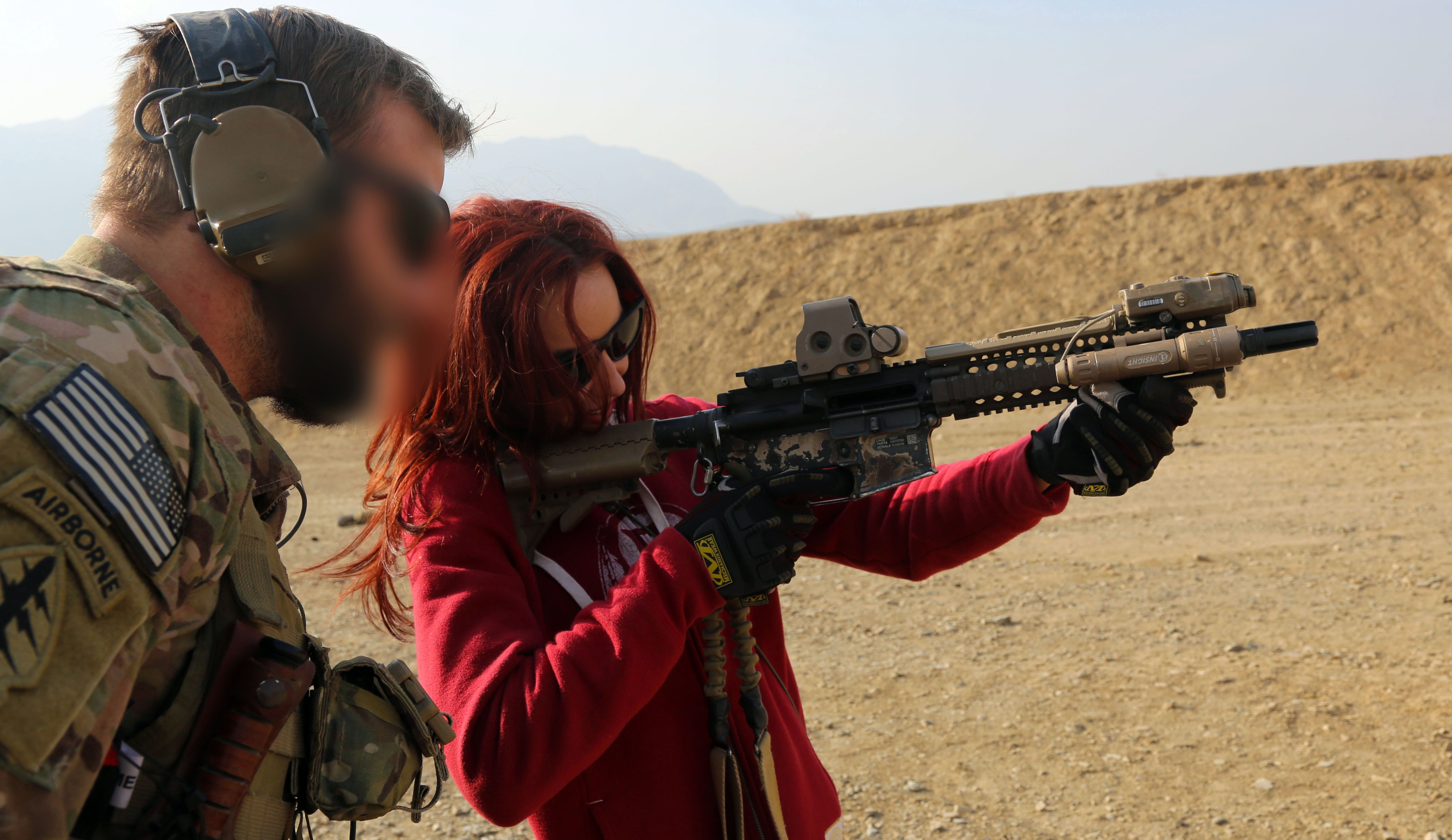
A guest post by Stanman (repost)
A Malaysian Perspective
Background
The Colt M4A1 was selected to replace the Steyr AUGA1 as the standard infantry weapon for the Malaysian Army in the mid-2000s in the aftermath of collapse of the joint venture between SMEO subsidiary Precision Technologies and Steyr-Mannlincher GmbH of Austria.
The intention had been to transfer all international Steyr AUG production to the Sungai Buloh facility in return for the third tranche of AUG rifles for the Malaysian Armed Forces. The JV collapsed amidst great acrimony between the two parties and production ground to a halt amidst law suits.
Suffice to say that the JV did not survive and with that the future of the Steyr in the Malaysian Army. This left the MAF short some 50,000 rifles and no manufacturer support for the AUGs in inventory. SMEO scrambled to salvage the situation and entered into an agreement to offer the Colt M4 carbine for this purpose and thanks to excellent lobbying was able to convince the MAF to adopt the M4 without an open comparative tender. Thus by fiat, the M4 became our new individual weapon.
The irony of course was that the Steyr had only partially supplanted the previous M16A1s in the MAF with many users still equipped with the previous Colt product.
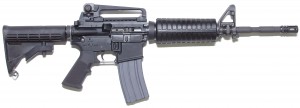
Colt M4A1
It is important to note that the MAF specifically uses the Colt M4A1 which is an AR-15 platform weapon with the following characteristics:
• 14.5” barrel with carbine length gas system & ‘F’ height front sight post (FSP).
• ‘M4’ polymer hand-guards with heat-shields. Secured with the end cap and delta ring.
• 6 position carbine buffer tube with ‘M4’ telescoping stock assembly.
• M4A1 bolt group with ‘O’ ring extractor buffer.
• ‘H2’ type recoil buffer (vis the H for the M4).
• Full-auto fire control group (as opposed to the burst fire on the M4).
• Carry handle with A2 type rear iron sights).
Though they would like to suggest otherwise, Colt is no longer the sole supplier of M4s to the US military and only owns the Colt part of the M4 name since it is a generic descriptor for AR15 carbines. SMEO has worked very hard to push the Colt M4A1 to all uniformed services on the basis of it being the national standard and consequently direct negotiation. This means they are obliged to offer that single configuration. Units who do not want the SMEO carbine will specifically write the spec to exclude the ‘standard’.
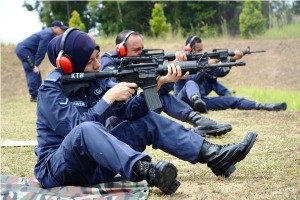
Despite being the most modular and accessorised weapon in history, the MAF has yet to issue any enhancements to their M4A1s with the exception of a small handful upgraded with UN peace keeping funds (per MALBATT 850-2).
Optical Sight
Undoubtedly the single most effective enhancement for any rifle is an optical sight. Many militaries regard optical sights to be their primary sighting system. The MAF did too until required to ditch the AUG.
The reasons for the lack of optics is quite complex and interesting. For many years, the Army was bound into an ‘Optics Central Contract’ which was simply yet another rent seeking activity. The mark up demanded was simply insane so the MAF had to wait for it to lapse. Unfortunately after it had lapsed, funds were totally soaked up by Gempita and so it drags.
Optical sights are much easier to use and hit with especially in dynamic and asymmetric situations. This has to do with the shooter having to deal with just one sighting plane rather than three (rear, front target).
Even handier are the reflex collimator or ‘red dot’ type sights which are used with binocular vision and are parallax free. These should be fitted to every carbine as a matter of course. Accuracy and speed of engagement is substantially improved compare to irons. This is especially beneficial to units that do not receive substantial training resources and opportunities.
One of the arguments is that optics are expensive. This is really not the case. Even premium military manufacturers like Aimpoint AB offer affordable models that are perfectly serviceable like their Patrol Rifleman’s Optic (PRO) that replaces the older Comp M2 and M3 line. Alternatively there are Korean and even PRC made optics that are quite serviceable for even less. Of course nothing is cheap when the agency costs are out of control.
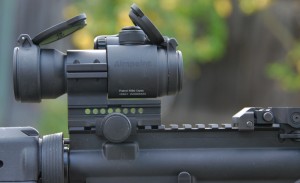
The current trend is towards compact format reflex sights like the Aimpoint Micro T-series. These offer all the functionality with less weight and bulk compared to full sized units like the Comp M4 or EOtechs. The Army apparently agrees since they bought some for the MALBATT 850-2 deployment with UN peace keeping funds.
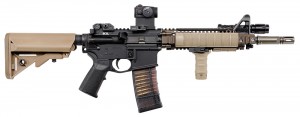
In addition to red dots, there is a place for medium power magnified optics in the infantry section. Indeed the final tranche AUGs were supposed to be partially equipped with 4x optics for issue to marksmen.
Magnification is especially useful for target identification and validation as well as engaging small and obscured targets. The classic medium power optic is of course the Trijicon ACOG which is extremely rugged and combat proven.
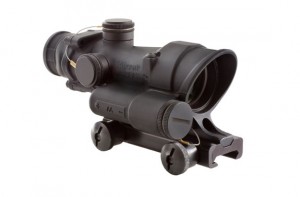
In fact, the latest battery driven 4×32 TA-02 ACOG means that there is no longer any need to worry about tritium dimming after 12-15 years. It also allows the reticle to be illuminated as desired
Back Up Iron Sight (BUIS)
Anything can fail and having a back-up is always a good thing. Years ago when optics had short battery lives and fragile electronics, the back-up iron sights were essential. Today, they are still a good idea since they are generally quite light and unobtrusive. Many BUIS fold down when not in use.
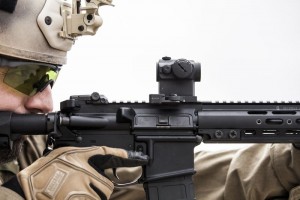
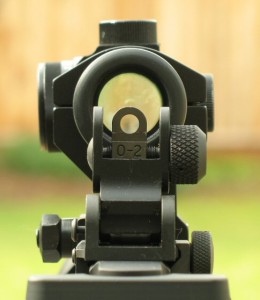
With non-magnified optics the irons can be deployed without removing the disabled sight. On AR platforms, it is usual to establish what is called a lower third co-witness where the iron sights are actually below the center-line of the red dot. This keeps the primary sight picture clear of clutter.
Handguards
Long ago, there were quad railed hand-guards. These provided the infrastructure for mounting all your tactical accessories. They were heavy, clunky and the bare rails tore up your hands. Eventually it was realized that all those rails were really not necessary and ultimately you wanted as few as possible to save both weight and fingers.
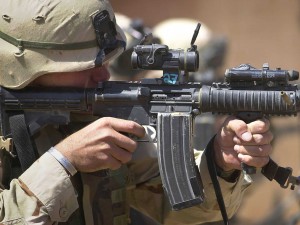
This became even more important as rails got longer like the SOPMOD RIS II. The extra length was to cater for the new techniques that emphasized a far forward grip to ‘drive’ the muzzle which by now was quite heavy with lights, lasers and suppressors. The rails alone started to get quite heavy.
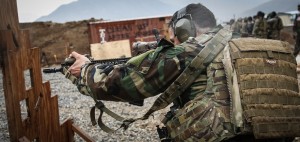
To cater for this, the current generation of hand-guards have ceased to actually have rails, leaving rather slots to which rails or more commonly accessories can be directly mounted. The two leading architectures are both royalty free in an attempt to maximise adoption.
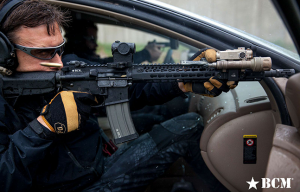
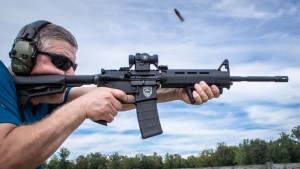
The lower handguard is the Magpul MOE SL and it represents a very good idea for a fulus strapped MAF. It costs about 10% of the B&T M4 Carbine rail bought for MALBATT 850-2 and is 40% lighter. It’s also rather more ergonomic as well as allowing compatible accessories like foregrips, sling loops and light mounts to be directly fitted to the mounting slot architecture. Best of all it does not require any armourer activity to install the hand-guards.
That certainly is not the case with most of the new style long hand-guards that pretty much require depot level installation. As they require the replacement of the A-frame gas block.
Slings
After the optic, the next most important accessory on a fighting long gun is a sling. Slings allow you to retain, control and stabilise your weapon, thus maximizing performance. A weapon should always be slung on the person for immediate access. The M4A1 as supplied to the MAF is issued with a basic carry strap and equipped with bottom mounted swivels. This is largely only useful for the parade ground and administrative carry since the rifle is turned away from the user when slung to the front.
The first step is to provide a forward slide slinging point to allow the carbine to hang correctly when slung. The second is to ditch the carry strap but definitely not for a 3-point sling which went out with the MP5. All modern tactical slings are quick adjustable 2-point arrangements that enable to user to tighten and loosen the sling with one hand.
There are many variations but they all function in a similar way. They allow for a greater range of movement and can be employed as a shooting aid unlike the 3-point. The 1-point loop sling doesn’t allow for much control and requires the user to positively control the gun itself to prevent it from flapping around.
The picture of SOPMOD RIS II (above) shows such a sling in use. This has a padded section. This allows the weight to be distributed more evenly and helps reduce fatigue.
Illumination
Visible illumination is pretty essential when operating in low light and indoors. What you cannot see, you cannot identify and what you cannot identify, you had better not shoot. Visible light allows such activities without night vision (NV), which is still quite rare for most MAF units. Even when equipped with NV, visible light is still required for verification since NV doesn’t handle colours.
The picture below shows a typical arrangement with a laser pointer/illuminator paired with a weapon mounted light. In this case, the light is a dual mode IR/visible unit that can emit in either spectrum.
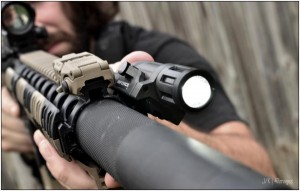
Lights that are designed to be mounted to weapons are called weapon lights. These often have integrated mounting systems and controls that are neater than hand held lights attached with clamping mechanisms.
Thanks in large part to the rapid development of LED technology, lights today are lighter, brighter and much more durable than a few years back. The LED does have a few drawbacks but the result is very much a gain compared to the old xenon bulbs.
The main one is life and reliability. Good LEDs last for tens of thousands of hours. The other is shock resistance…they are solid state and are not affected by muzzle blast. Like bulbs.
Finally, they can be driven with lower voltages so you do not need CR123 batteries for some models. Plain AA cells will do just fine.
Perhaps the biggest misconception about illumination is that it gives your position away when used. The term ‘dominate by light’ is very apt since modern lights are enormously powerful, typically several hundred lumens which is positively blinding to anyone caught in the beam proper and also momentarily ruins low light vision for observers. What you can see, you can shoot so dominating by light rapidly transitions into dominating by fire.
Furniture
Although there are literally dozens of stocks and grips for the M4, none of them actually make a measurable difference compared to the standard A2 pistol grip or 6-position M4 stock. Some are more comfortable, others are more robust but none are essential.
Neither are vertical grips which are really no longer employed as such since they provide less control and are awkward to operate switches for lights and lasers. The picture from 2005 shows the older technique while the other pictures shows the more contemporary technique. Note how the support hand is far forward and close to the accessories for easy manipulation. Vertical grips are now used primarily as indexing points and hand stops.
Other Accessories
These few items regarded as the ‘essential pimp’ for a fighting carbine. There is almost and endless amount of stuff to bolt onto your gun but the real question is ‘does it make you shoot better’ or ‘is it necessary’? Depending on what you do, the answers will vary.
If we take laser pointers and illuminators as an example. These are generally really only used with Night Vision Goggles since wearing these precludes the use of weapon sights. You can get visible laser pointers but they really do not work particularly well as controlling and tracking the dot is quite difficult compared to looking down a sight.
Suppressors are probably the single best accessory to have on a gun after all the above. They not only reduce the firing report, they are also excellent flash hiders and muzzle brakes. In a prefect force, all rifles would come with them as standard.
Perhaps the dumbest thing to do is to hang another weapon on your rifle. You wind up with a clunky rifle and a clunky secondary weapon. Stand-alone grenade launchers are more effective and easier to operate.
Ultimately, you should have the bare minimum possible since a lighter gun is going to be less tiring and easier to handle
* the views expressed here are soley those of the writer.
— Malaysian Defence
If you like this post, buy me an espresso. Paypal Payment

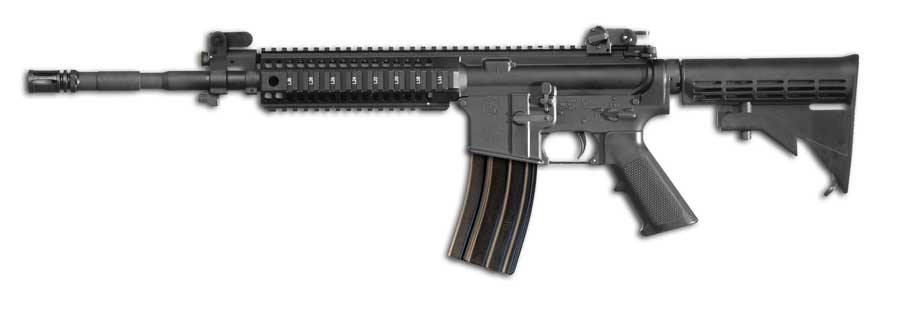
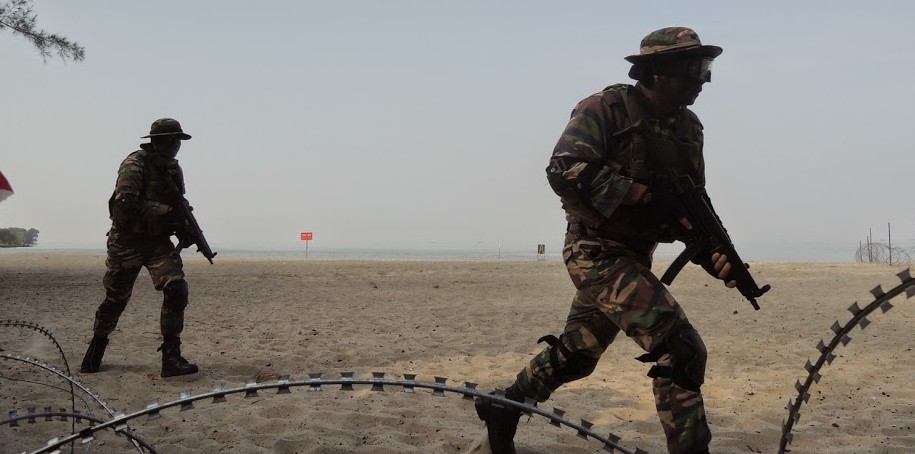
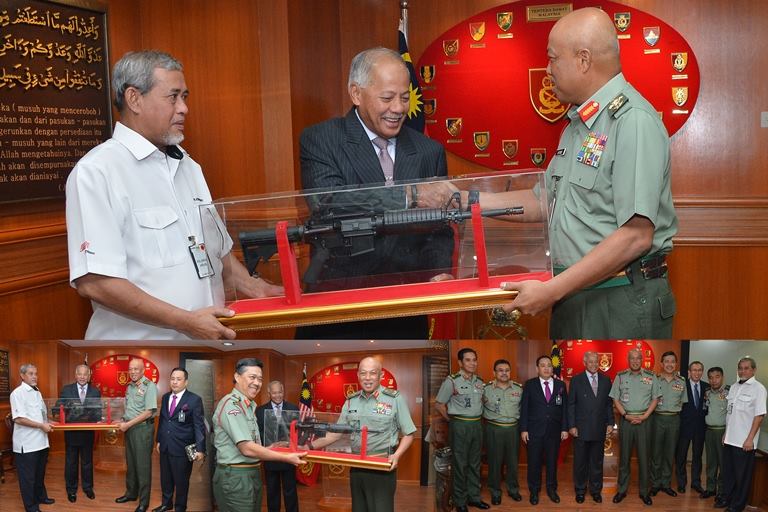
I wonder those handling the findings for the army can notice them. If we are ditching the Steyr AUG for the M4, we should go for the best specs we can get our hands on. I personally think that optic sights should be a compulsory as we chose not to have the Steyr…… which has an optic sight attached to it.
Please contact SMEO. They have an override and are not interested in anything that gets in the way of selling more vanilla M4s.
I it’s just a repost here but I wanna ask about Surefire Rapid Transition Sight (RTS)
Does the sight really that effective? I heard that the RTS BUIS is really hard to use…
Thank you and sorry for the trouble…
Offset sights are not difficult to use but offset irons require a lot of work. This is because you have no easy cheekweld to index the sights. Offset reflex collimators like a Aimpoint Micro or a Trijicon RMR are much easier. Usually used with a magnified optic. I like the arrangement but it is $$$$$. Gomen tarak fulus.
Can our military personnel customize their M4? Like changing hand guard, buying their own sights and lights?
Reply
No